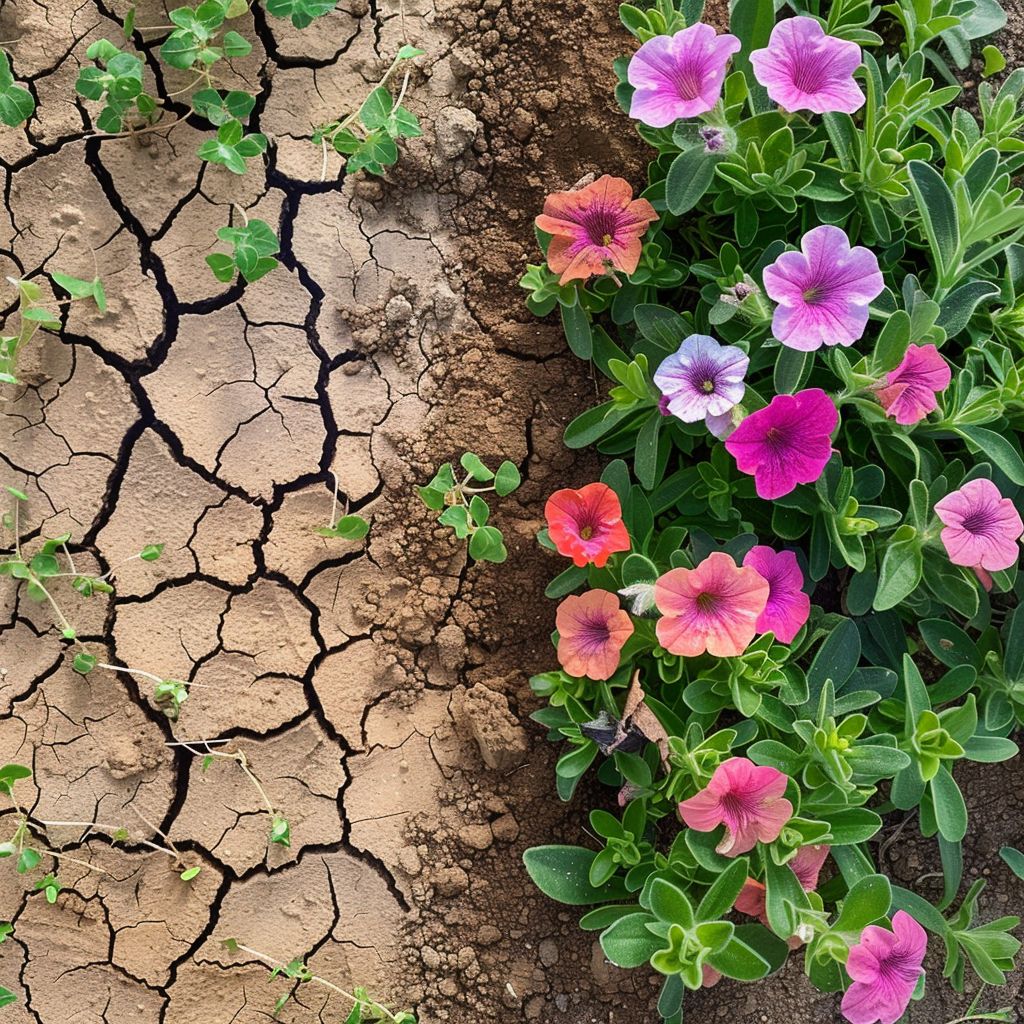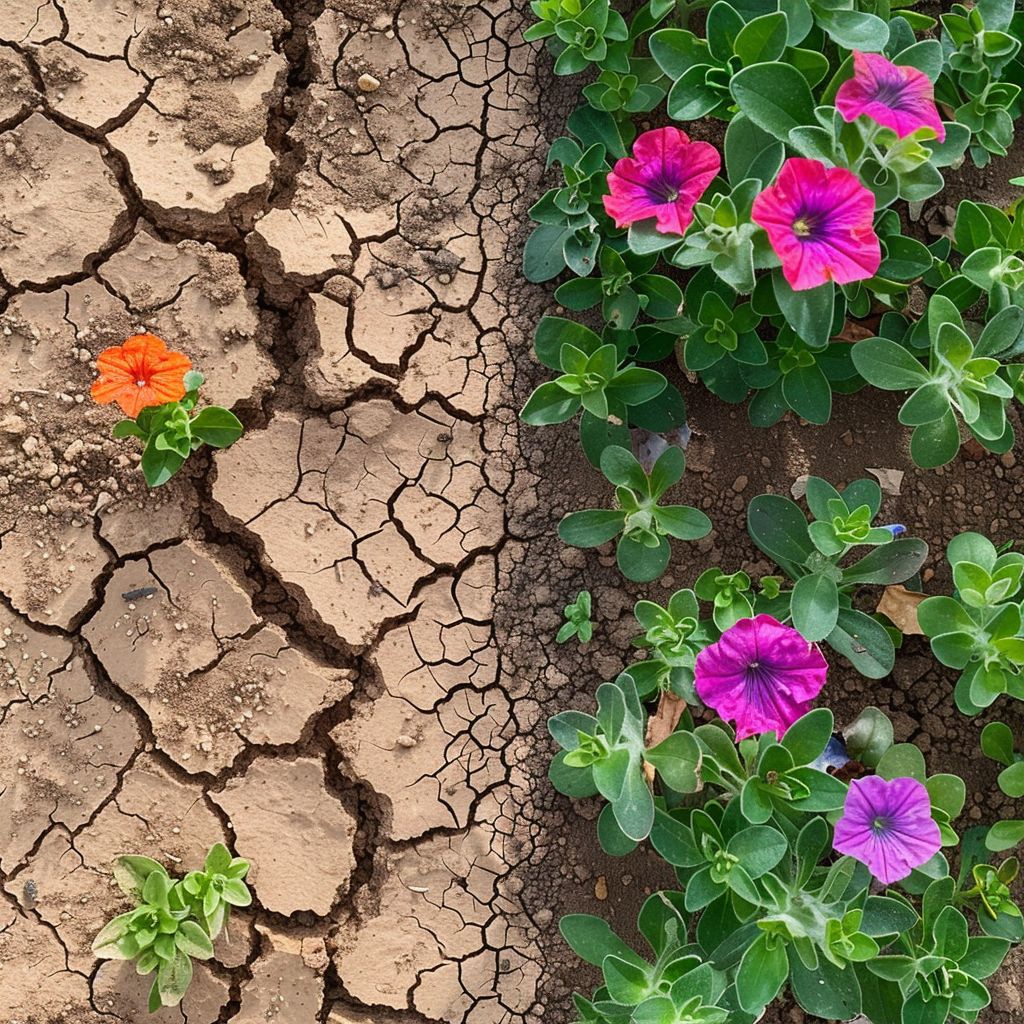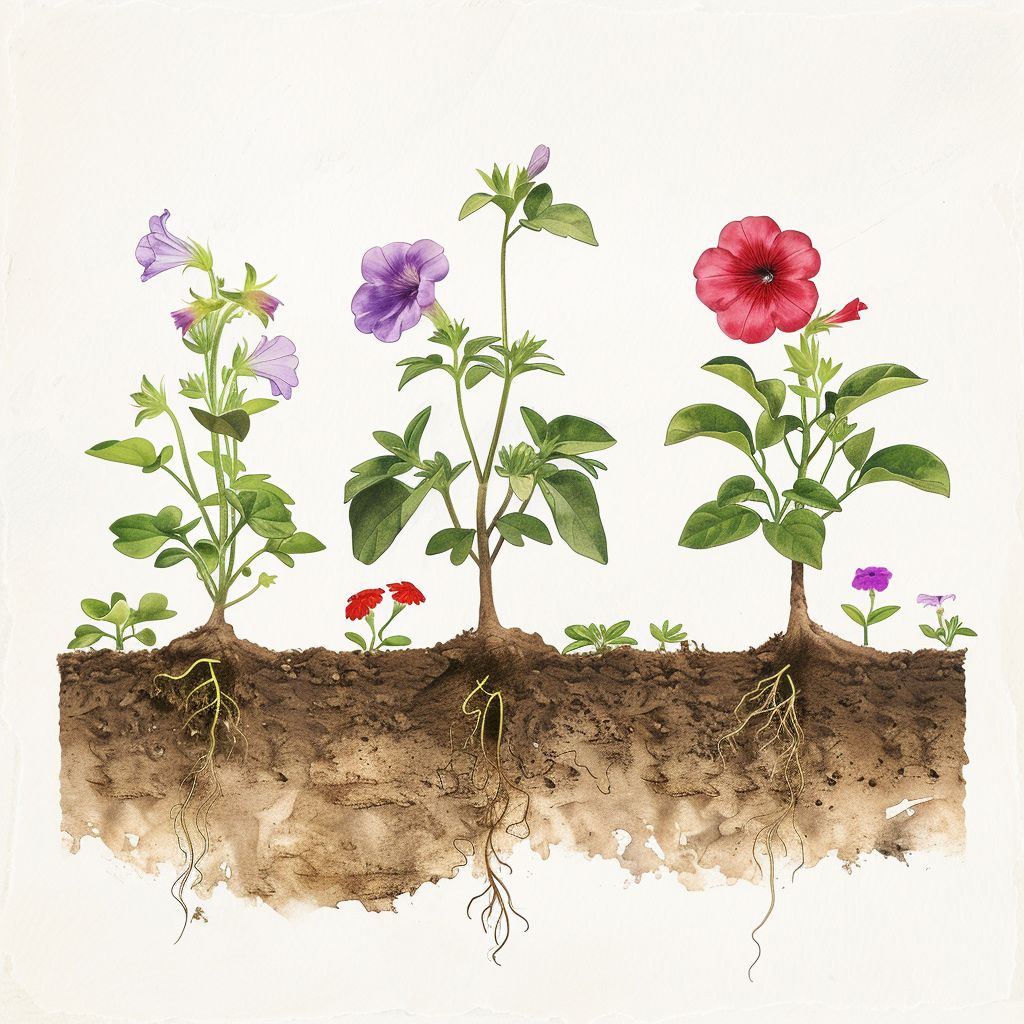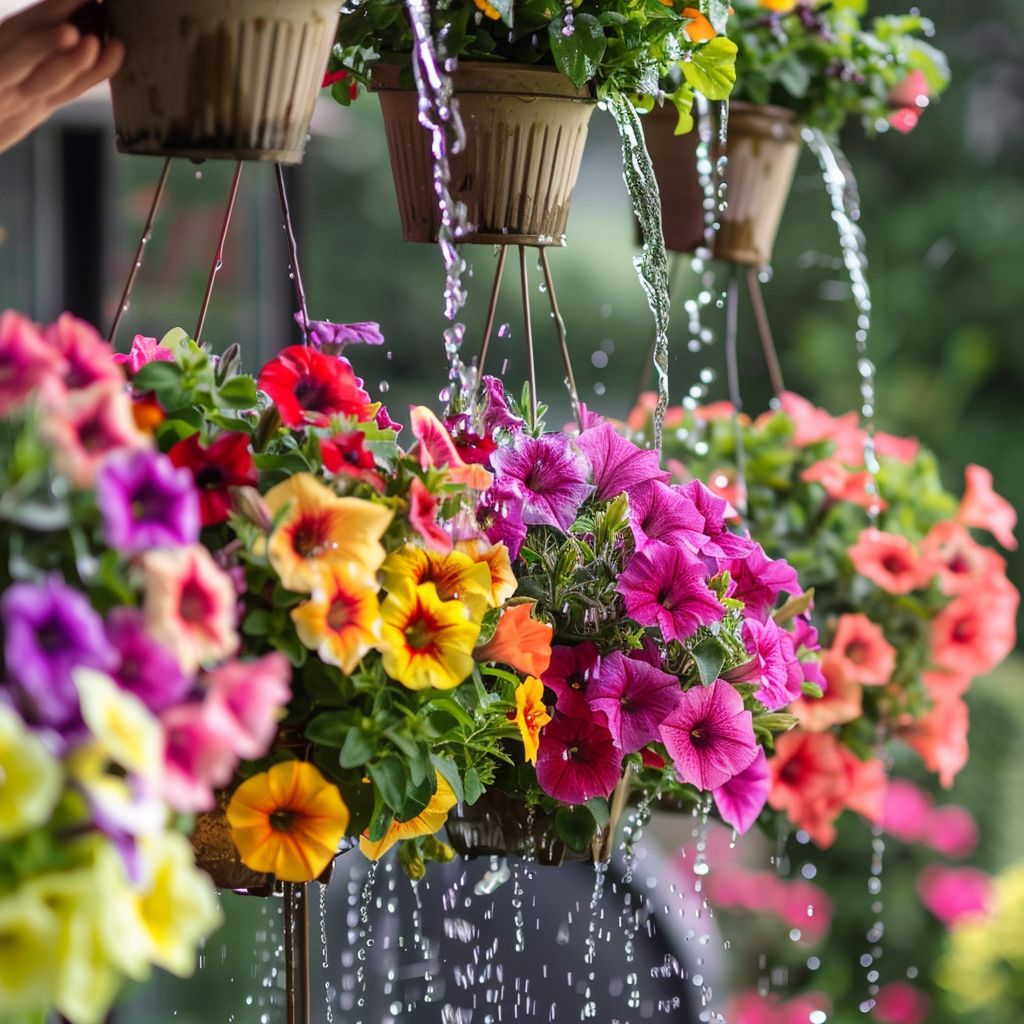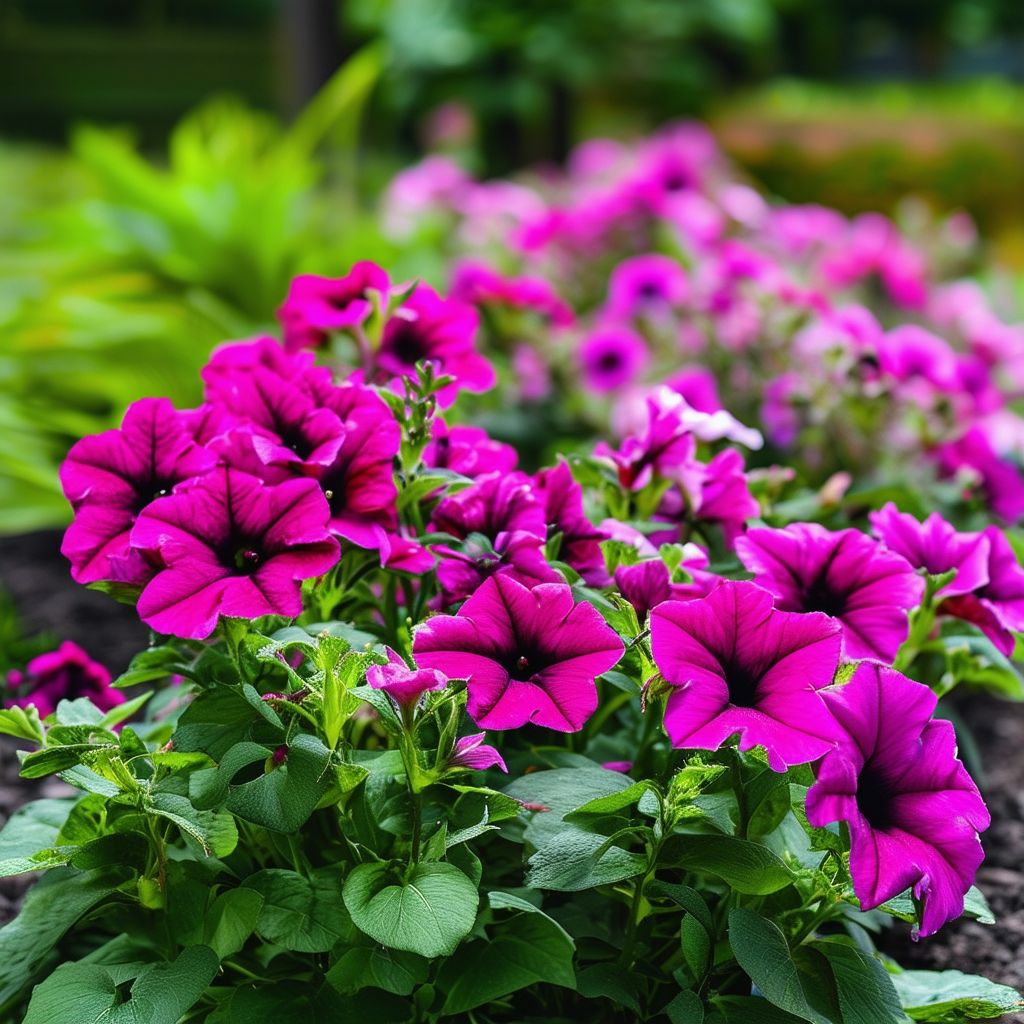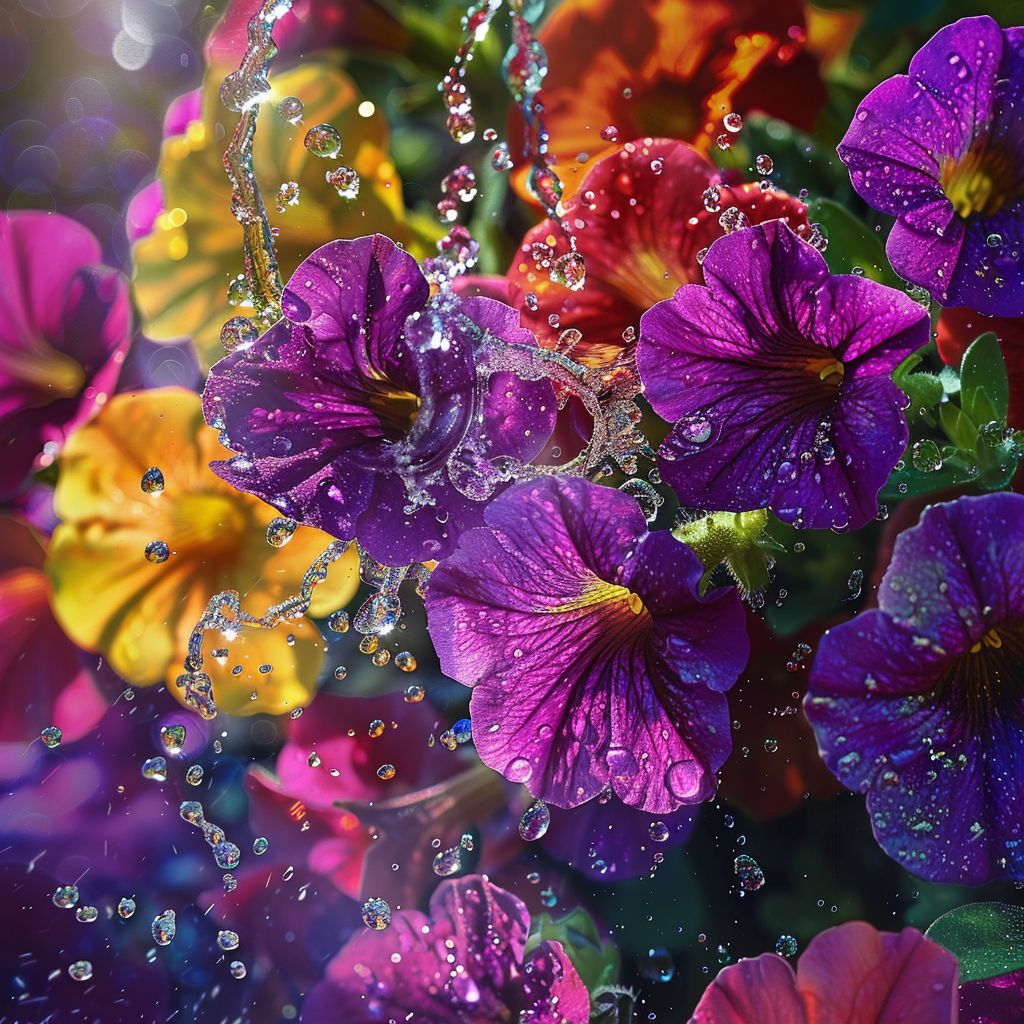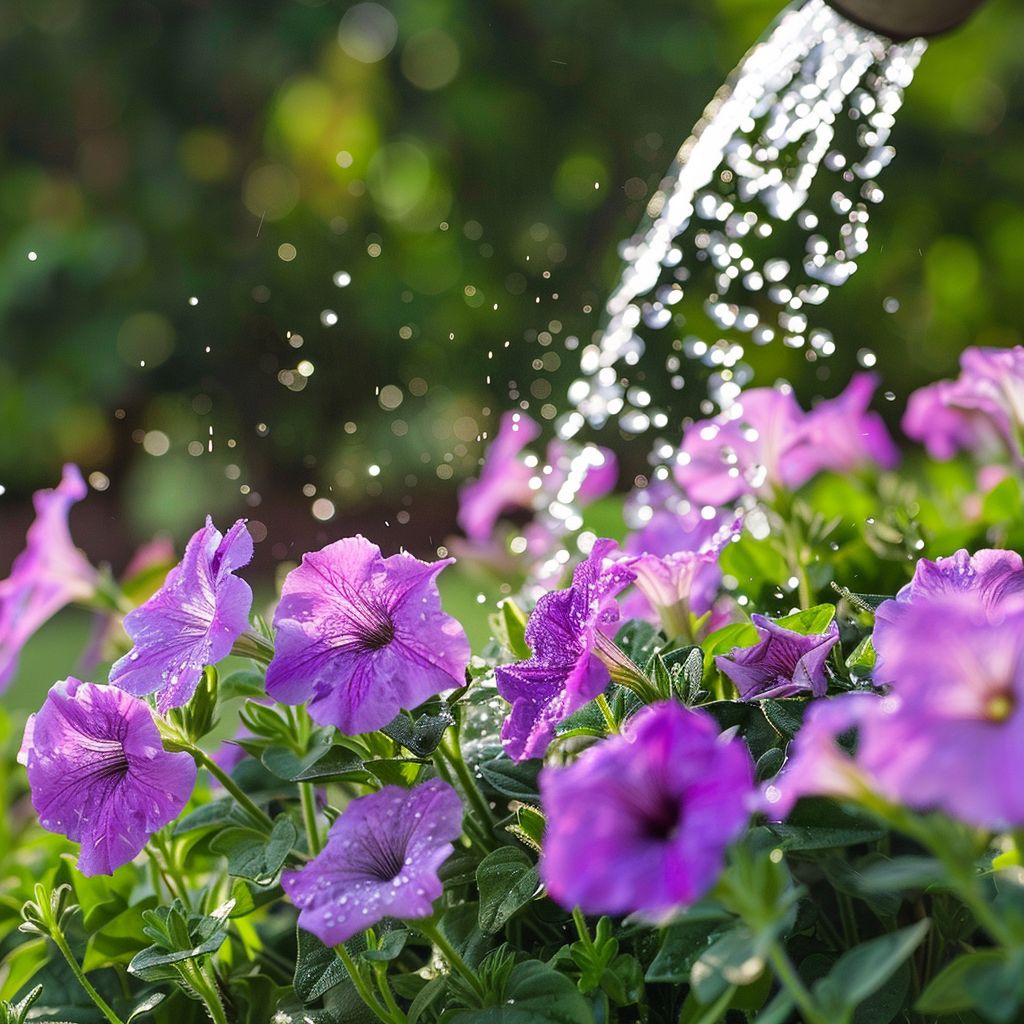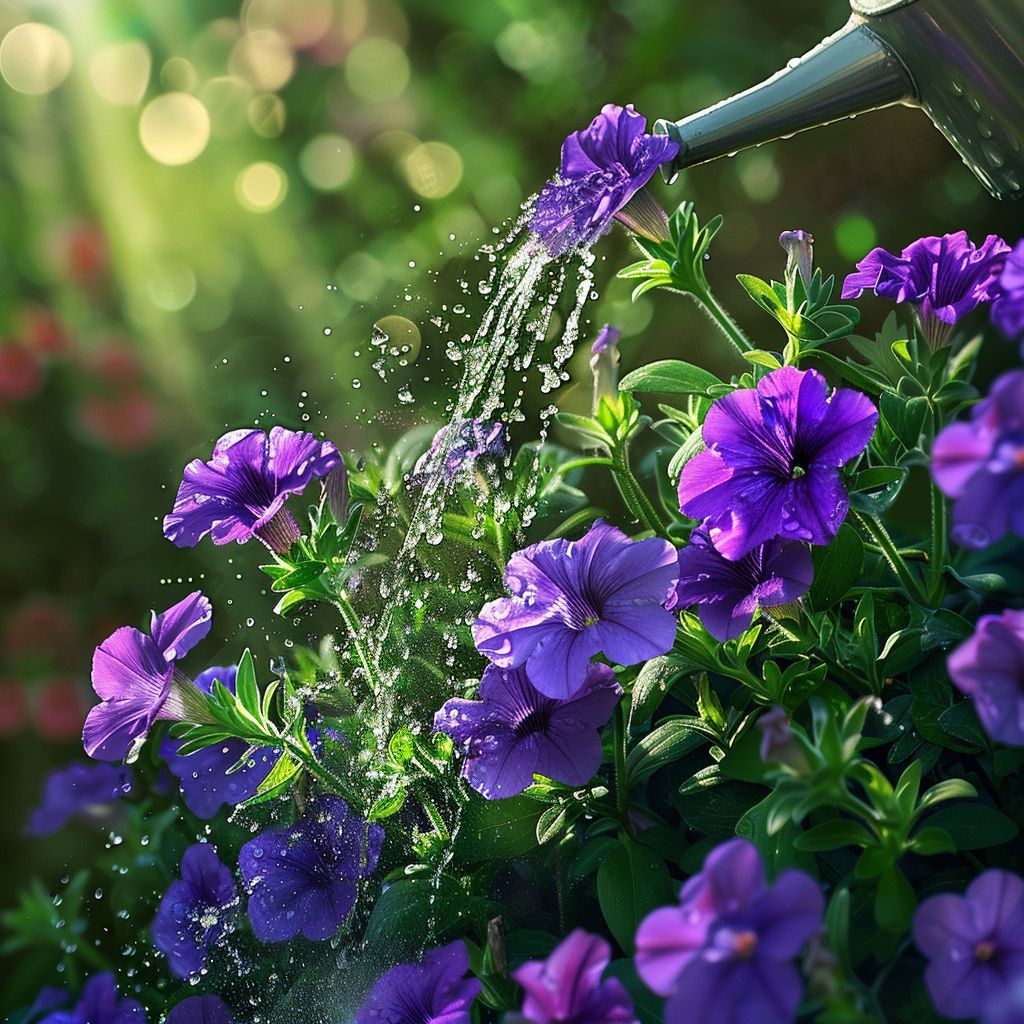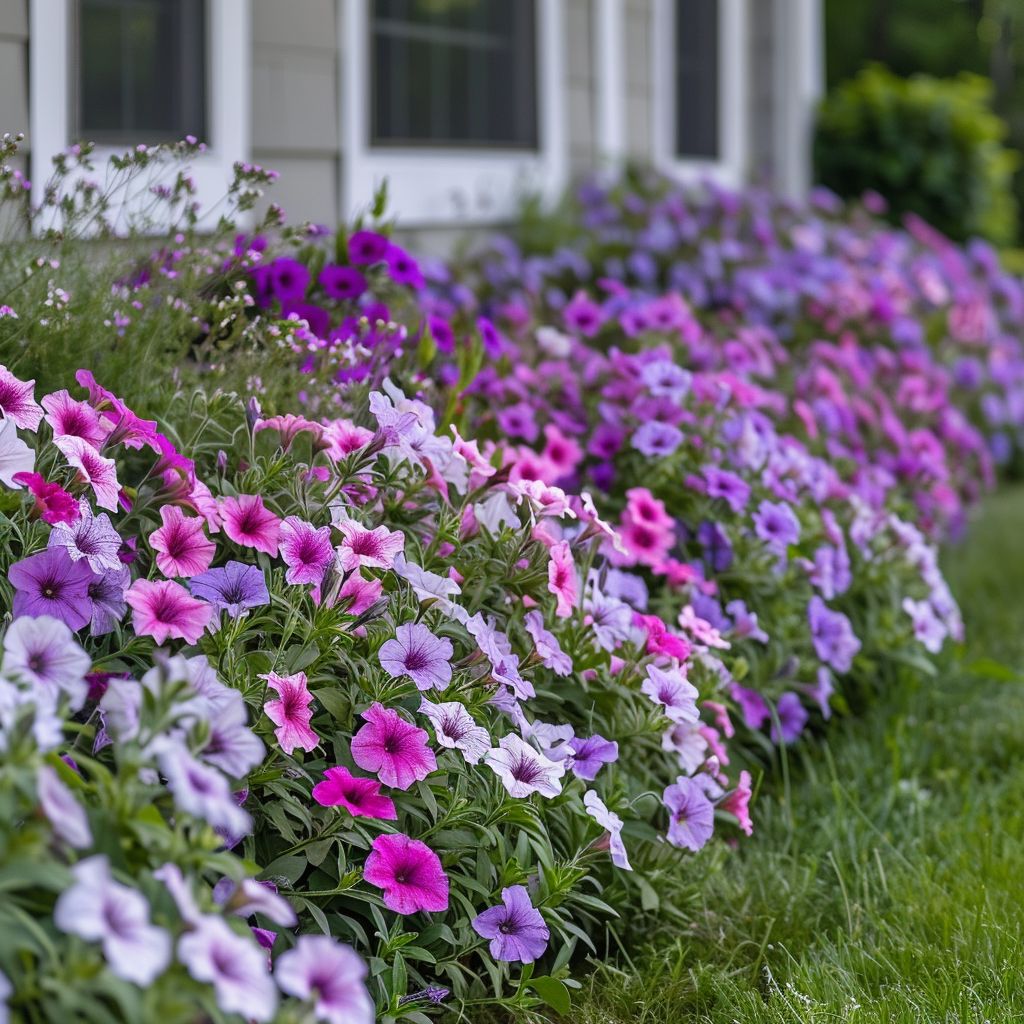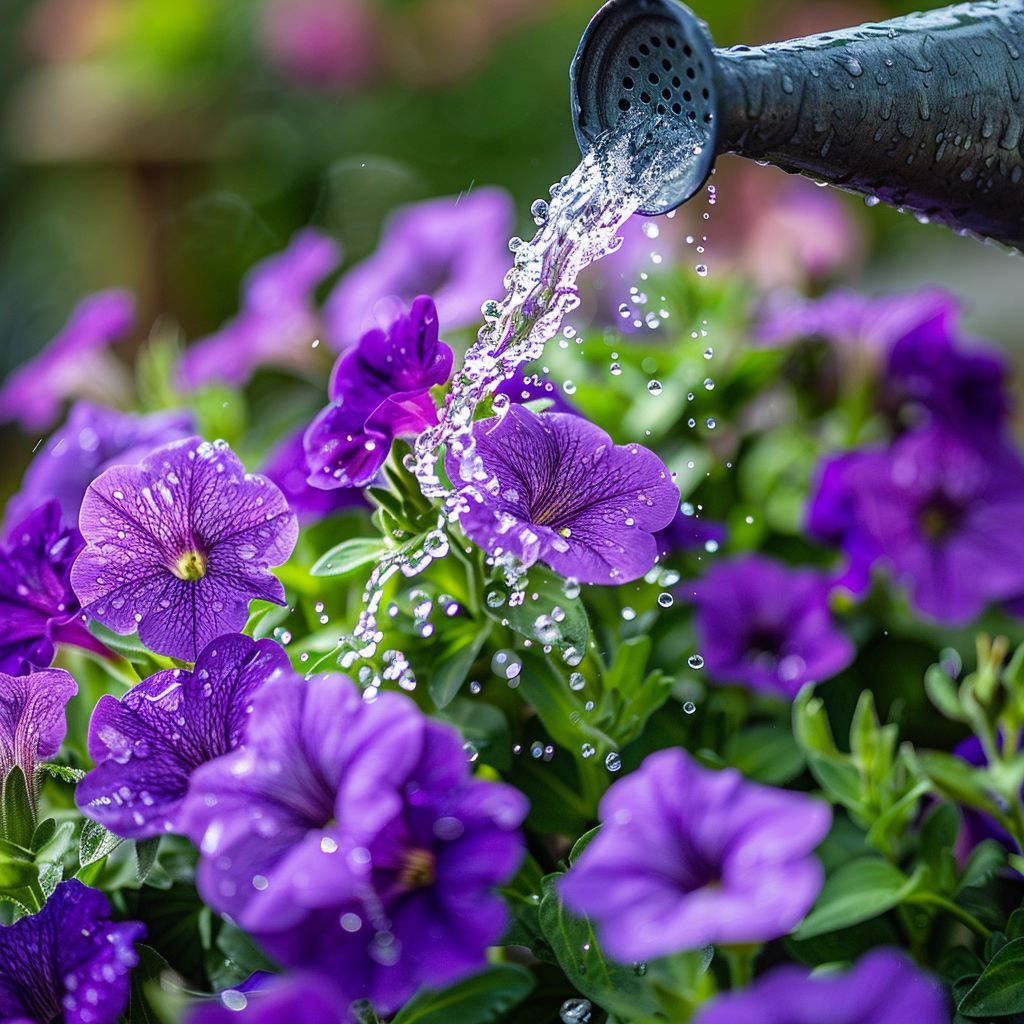Mastering the Art of Watering Petunias
Petunias are a gardener’s delight, known for their vibrant blooms and easygoing nature. To get the most out of your petunias, understanding their watering needs is crucial. Here’s a comprehensive guide to help you keep your petunias lush and thriving.
Understanding Petunias’ Water Needs
Petunias are relatively easy to grow, but getting their watering just right can make a significant difference in their health and blooming potential. These plants thrive on consistent moisture but are also somewhat drought-tolerant. Let’s delve into the specifics of their water requirements.
The Basics of Soil Moisture
Keeping the soil consistently moist, but not waterlogged, is essential for petunias. Overwatering can lead to root rot and other issues, while underwatering can cause the plants to wilt and affect their blooming ability. Aim to keep the top few inches of soil moist, allowing it to dry out slightly between waterings.
The Role of Soil Type
The type of soil in which your petunias are planted plays a significant role in their watering needs. Well-draining soil is ideal for petunias, as it prevents water from accumulating around the roots. Heavy clay soils, which tend to retain water, might require less frequent watering, while sandy soils, which drain quickly, might need more frequent watering.
Crafting the Perfect Watering Schedule
The watering schedule for petunias depends on various factors, including whether they are planted in the ground, in pots, or in hanging baskets, as well as the local climate and weather conditions.
In-Ground Petunias
In-ground petunias typically need watering once a week. However, during hot, dry spells, you might need to increase this frequency. Ensure that the top 6-8 inches of soil are thoroughly moist each time you water. Checking soil moisture regularly is essential; if the soil feels dry an inch below the surface, it’s time to water.
Potted Petunias
Petunias in pots dry out more quickly than those in the ground and may need watering 2-3 times a week. During particularly hot periods, daily watering might be necessary. Regularly check the soil moisture; if the soil feels dry an inch below the surface, it’s time to water. Also, ensure that pots have proper drainage to prevent waterlogging.
Hanging Baskets
Petunias in hanging baskets require even more frequent watering due to increased exposure to air and sun. Water them thoroughly at least 2-3 times a week, and more often if the weather is extremely hot. Hanging baskets tend to dry out quicker, so lifting the basket to check its weight can help determine if watering is needed. A light basket indicates dryness and the need for immediate watering.
Optimal Watering Techniques
How you water your petunias is just as important as how often you do it. Using the right techniques can promote healthy growth and vibrant blooms.
Deep Watering
To encourage deep root growth, water petunias deeply and slowly. This ensures that moisture reaches the deeper soil layers, promoting stronger root systems and better drought resistance. Deep watering involves applying water slowly over a longer period, allowing it to soak into the soil thoroughly.
Morning and Afternoon Watering
The best times to water petunias are early in the morning or late in the afternoon. Watering during these times allows the plants to absorb the moisture they need without excessive evaporation. Avoid watering in the middle of the day when the sun is strongest, as this can lead to rapid evaporation and leave your plants thirsty. Also, avoid late-night watering, which can leave the foliage wet overnight and increase the risk of fungal diseases.
Avoid Overwatering
While petunias need regular watering, overwatering can be detrimental. Signs of overwatering include yellowing leaves and wilting. If you notice these signs, reduce the frequency of watering and ensure that your soil has proper drainage. In cases of severe overwatering, repotting the plant with fresh soil and removing any rotten roots may be necessary.
Enhancing Water Retention
There are several strategies you can employ to enhance water retention in the soil, reducing the frequency of watering and ensuring your petunias receive adequate moisture.
Using Mulch
Applying mulch around your petunias can help retain soil moisture, reduce the frequency of watering, and protect the roots from temperature fluctuations. Organic mulches, such as compost or bark chips, are particularly effective. Mulch acts as a barrier, reducing evaporation from the soil surface and maintaining consistent moisture levels.
Soil Amendments
Incorporating organic matter into the soil can improve its water-holding capacity. Compost, for instance, can help both clay and sandy soils retain moisture more effectively. Regularly amending your soil with compost or other organic materials can enhance its structure and moisture retention capabilities.
Choosing the Right Containers
For potted petunias, choosing the right container is crucial. Containers made from materials like terracotta can dry out more quickly than those made from plastic or glazed ceramic. Opt for larger pots with sufficient depth to allow root growth and retain moisture. Ensure the pots have drainage holes to prevent waterlogging.
Recognizing Water Stress
Understanding the signs of water stress in petunias can help you adjust your watering practices to meet their needs better.
Signs of Underwatering
Underwatering can cause petunias to wilt, and the leaves may turn brown and crispy. If you notice these symptoms, increase the frequency of watering and ensure the soil remains consistently moist. Regularly checking the soil moisture and adjusting your watering schedule accordingly can prevent underwatering.
Signs of Overwatering
Overwatering can lead to yellowing leaves, wilting, and root rot. If you notice these signs, reduce the frequency of watering and ensure proper drainage. Repotting the plant with fresh soil and removing any rotting roots can help revive an overwatered petunia.
Adjusting for Climate and Weather
The local climate and weather conditions play a significant role in determining the watering needs of your petunias.
Hot and Dry Climates
In hot and dry climates, petunias will need more frequent watering to compensate for the increased evaporation. Checking the soil moisture regularly and adjusting your watering schedule to prevent the soil from drying out is essential. Mulching can also help retain moisture in these conditions.
Cool and Humid Climates
In cooler, more humid climates, petunias may require less frequent watering. Ensure that the soil remains moist but not waterlogged. In these conditions, overwatering can be a more significant concern, so be cautious about the frequency and amount of water you apply.
Seasonal Adjustments
Adjust your watering schedule according to the seasons. During the peak of summer, more frequent watering may be necessary, while in cooler months, you can reduce the frequency. Pay attention to the weather forecast and adjust your watering practices accordingly.
Final Thoughts
Watering petunias correctly can make a significant difference in their health and blooming potential. By understanding their moisture needs and adjusting your watering habits accordingly, you can enjoy a vibrant display of flowers all season long. Stick to a regular watering schedule, pay attention to the weather and soil conditions, and your petunias will reward you with their stunning beauty. Happy gardening!
